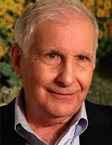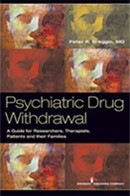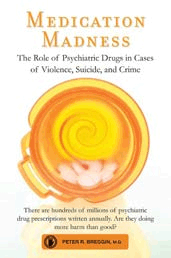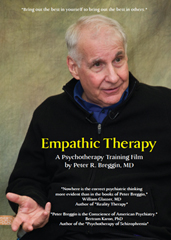Violence and Suicide Caused by Antidepressants Report to the FDA
by Peter R. Breggin, M.D.
August 23, 2004
On March 22, 2004 the FDA issued a “Public Health Advisory” cautioning about the risks associated with the new generation of antidepressants including the SSRIs. In examining drug-induced suicide, the FDA’s also observed that certain behaviors are “known to be associated with these drugs,” including “anxiety, agitation, panic attacks, insomnia, irritability, hostility, impulsivity, akathisia (severe restlessness), hypomania, and mania.”
This syndrome will cause both suicide and violence. Each of the adverse drug reactions described as “known” antidepressants effects has been linked to violence—most obviously agitation, irritability, hostility, impulsivity, akathisia, hypomania and mania. The FDA’s conclusions seem drawn from my recent detailed review of SSRI adverse effects (Breggin 1993/1994, p. 32): “Mania with psychosis is the extreme end of a stimulant continuum that often begins with lesser degrees of insomnia, nervousness, anxiety, hyperactivity and irritability and then progresses toward more severe agitation, aggression, and varying degrees of mania.”
I made a similar analysis ten years ago in Talking Back to Prozac (1994) when I suggested that a label warning for SSRI antidepressants should include specific behavioral reactions including violence, depression and suicide (also see Breggin, 1997, 2002).
Breggin Antidepressant Column, p. 2 As a psychiatrist and as a medical expert, I have examined dozens of cases of individuals who have committed suicide or violent crimes while under the influence of the newer antidepressants. In South Carolina, for example, twelve year old Christopher Pittman shot his grandparents to death shortly after starting Zoloft. In other cases, a fourteen-year-old girl on Prozac fired a pistol pointblank at a friend but the gun failed to go off, and a teenage boy on Zoloft beat to death an elderly woman who complained to him about his loud music. A greater number of cases involve adults who developed dyscontrol and manic-like aggressive syndromes while taking antidepressants. Numerous criminal cases have been positively influenced by my testimony concerning these adverse drug effects.
Antidepressant-induced mania can lead to violence and also “crashing” with depression and suicide. One clinical trial showed a rate of 6% manic reactions for depressed children on Prozac (Emslie et al., 1997). None developed mania on a sugar pill. The FDA-approved label for Luvox indicates a rate of 4% for mania in children in controlled clinical trials. In short-term clinical trials, 1% or more of depressed adults typically develop mania compared to a small fraction on the sugar pill.
The FDA should follow the example of Great Britain in discouraging the use of these drugs in children. Beyond that, the FDA and the medical profession must forthrightly educate potential patients and the public about the sometimes life-threatening risks associated with the use of antidepressant medications, including suicide and violence.
Breggin Antidepressant Column, p. 3 Bibliography Breggin, P. (1997). Brain-Disabling Treatments in Psychiatry (New York: Springer Publishing Company). Breggin, P. (2002). The Antidepressant Fact Book. (New York: Perseus). Breggin, P. (2003/2004). Suicidality, violence and mania caused by selective serotonin reuptake inhibitors (SSRIs): A review and analysis. International Journal of Risk and Safety in Medicine, 16: 31-49, 2003/2004. (The complete text of the peerreviewed article appears on www.breggin.com). Breggin, P. and Breggin, G. (1994). Talking Back to Prozac. (New York: St. Martin’s Press). Emslie, G., Rush, A., Weinberg, W., et al. (1997). A double-blind randomized, placebo-controlled trial of fluoxetine in children and adolescents with depression. Archives of General Psychiatry 54:1031-1037. Contact Information: Peter R. Breggin M.D., 206A Dryden Rd PMB 112, Ithaca, NY 14850, 607-272-5328.





